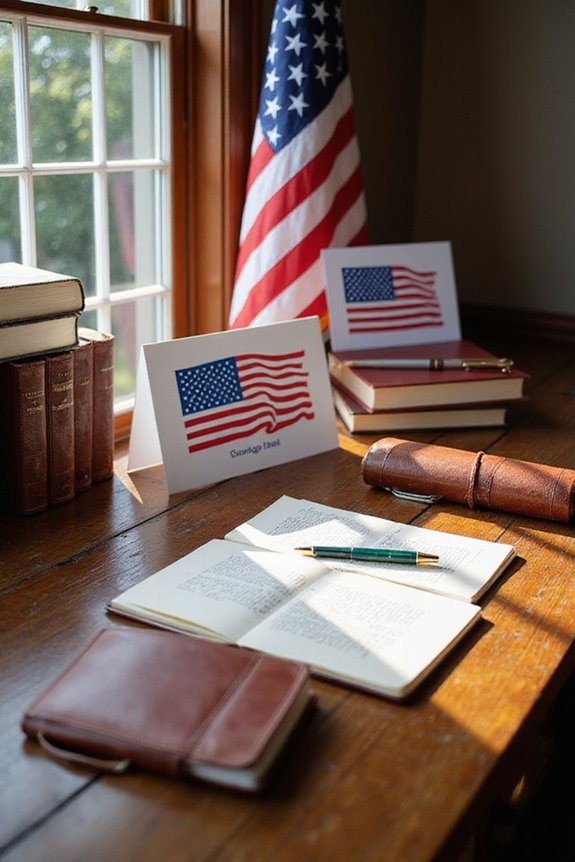When managing political ballot envelopes in bulk, we must prioritize several key areas:
- Printing Requirements: Envelopes must be 6” x 9”, weigh under 1 ounce, and use dark inks against light backgrounds.
- Logistics: Initiate address verification 60-70 days prior to elections to guarantee timely delivery.
- Legal Compliance: Adhere to regulations regarding voter signatures and bipartisan oversight.
- Cost Efficiency: Bulk printing reduces costs and optimizes resources.
Understanding these aspects is vital for effective ballot management during elections.
Key Takeaways
- Ballot envelopes should measure approximately 6” x 9” and weigh 1 ounce or less for efficient bulk mailing.
- Ensure compliance with USPS guidelines for legibility and structural integrity when printing bulk envelopes.
- Address verification must occur 70 to 60 days prior to elections to guarantee timely delivery of ballots.
- Collaborate with USPS to streamline bulk mailing processes and maintain adherence to election regulations.
- Utilize distinct colors for outgoing and return envelopes to facilitate sorting and recognition in bulk mailings.
Printing Requirements for Ballot Envelopes
When considering the printing requirements for ballot envelopes, several key factors must be addressed to guarantee compliance and functionality.
- Size and Weight: Envelopes should measure approximately 6” x 9” and weigh 1 ounce or less.
- Design Specifications: Printing must adhere to USPS guidelines, ensuring legibility and structural integrity. Additionally, proper design contributes to the overall efficiency of election mail. Political ideologies can influence how election materials are perceived by the public.
- Color Contrast: Dark inks should be used against lighter backgrounds for clarity on addresses and markings.
- Official Markings: Only authorized officials can use the Official Election Mail™ logo, following specific print and color standards.
- Instructions: Clear, concise instructions enhance voter comprehension and reduce errors in ballot return.
Logistics of Bulk Mailing for Elections
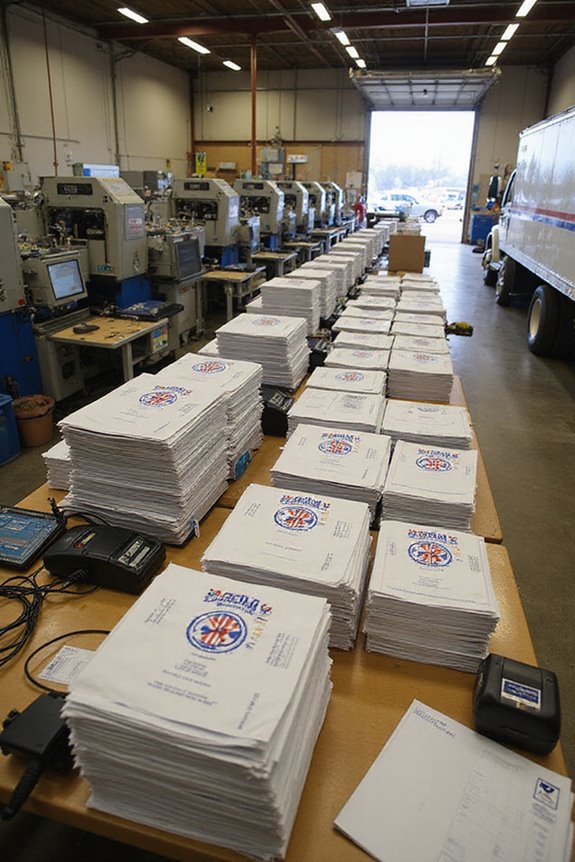
To successfully manage the logistics of bulk mailing for elections, we must consider several critical factors that guarantee timely delivery and compliance with regulations.
- Address Verification: Confirming valid and current mailing addresses is essential; mailings should begin 70 to 60 days before an election.
- Timeline Management: We must align mailing deadlines with USPS processing timelines to guarantee ballots arrive before elections. Additionally, we should ensure that our envelope designs meet USPS requirements for efficient mail processing.
- Handling Procedures: Ballots should be distributed immediately and processed daily without delay.
- Mailing Supplies: Orders for envelopes and materials must be confirmed well in advance to meet production schedules.
- Collaboration: Engaging with USPS ensures our envelopes meet regulations and enhances processing efficiency.
Legal and Regulatory Considerations in Ballot Processing
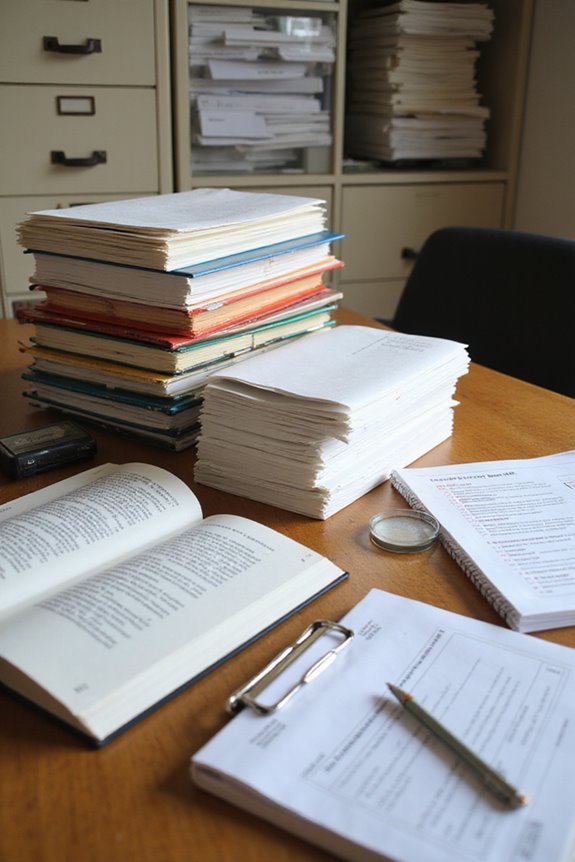
As we continue to explore the intricacies of ballot processing, understanding the legal and regulatory landscape is essential for ensuring compliance and maintaining the integrity of elections. Key considerations include:
- Signature Matching: Voter signatures on ballot envelopes must match those on file. States may allow minor variations, but strict adherence is vital. Credibility of sources is crucial in verifying the authenticity of signatures, as it helps prevent fraudulent activities.
- Bipartisan Oversight: Legal mandates often require representatives from both major parties to oversee envelope opening and ballot extraction, ensuring transparency.
- State-Specific Regulations: Each state enforces unique rules regarding ballot handling, verification, and curing of defects, making it imperative for election officials to stay informed. Pre-processing enables a more efficient and timely result tabulation, thereby enhancing the overall electoral process.
- Chain of Custody: Secure storage and detailed logs are necessary to maintain the integrity of ballot envelopes throughout the process.
Understanding these elements helps safeguard our electoral process.
Technical and Operational Aspects of Ballot Preparation
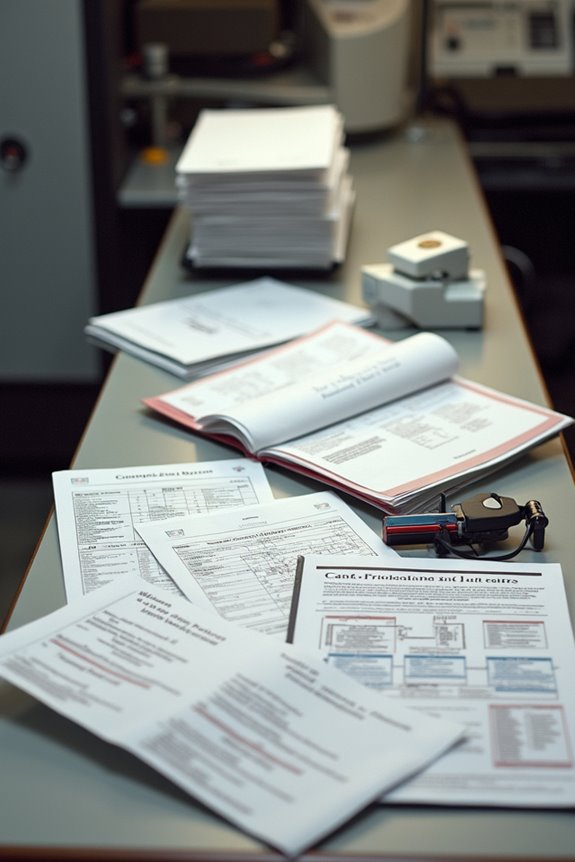
Understanding the technical and operational aspects of ballot preparation is essential for ensuring a smooth electoral process. Key components include:
- Envelope Design: Envelopes must accommodate ballots and secrecy sleeves comfortably, preventing issues during sealing or mailing.
- Voter Privacy: Secrecy envelopes protect voter identity while complying with transparency standards. Signature tabs must be placed beneath the envelope flap.
- Weight and Size: Envelopes should weigh 1 oz or less to qualify for single First-Class Mail postage, meeting USPS letter size ratios. USPS ensures secure delivery of Election Mail, which includes the timely processing of ballots.
- Color Coding: Distinct colors for outgoing and return envelopes aid in sorting and help voters recognize their ballots easily.
- Usability Testing: Simpler designs and contrasting colors improve user confidence and reduce confusion during ballot packing.
These factors collectively enhance the effectiveness and reliability of the voting process.
Cost Management and Resource Allocation for Mail Ballots
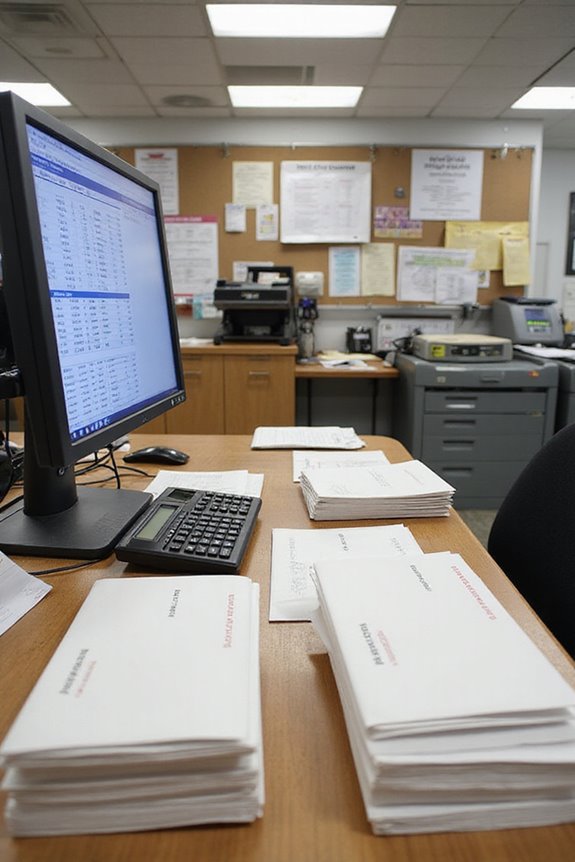
Cost management and resource allocation for mail ballots are critical aspects of modern electoral processes, especially as mail-in voting becomes more prevalent.
- Cost Efficiency: Bulk printing and mailing can reduce per-ballot costs, but initial investments in sorting and verification technology are essential. Additionally, states with rising early voting have shown that effective resource allocation can enhance voter participation. Implementing high-quality materials for ballot envelopes can also contribute to cost efficiency by ensuring durability and reducing spoilage during transit.
- Budget Forecasting: We must anticipate rising postage expenses alongside savings from fewer polling places and workers.
- Operational Coordination: Collaboration between local election offices and USPS is crucial for optimizing resources and minimizing waste.
- Temporary Staffing: We need to allocate staff during peak periods, ensuring accuracy despite automation.
- Long-term Savings: Upfront costs for technology can lead to significant operational savings over time, balancing initial expenditures with future efficiencies.
Frequently Asked Questions
How Can Voters Track Their Mail Ballot Status?
Isn’t it ironic that tracking our mail ballot status feels like a treasure hunt? With voter notifications via email or SMS, we can guarantee our votes are counted—let’s embrace this modern convenience together!
What Happens if a Ballot Envelope Is Damaged?
If a ballot envelope’s damaged, we can request an envelope replacement from election officials. Our damaged ballots still allow unaffected votes to count, maintaining our privacy and ensuring our voices are heard despite the mishap.
Can Voters Request a Replacement Ballot Envelope?
Did you know that nearly 5% of voters request a replacement ballot each election? If we need a replacement request, we can easily ask for a ballot reissue through our local election office.
How Are Ballot Envelopes Secured During Transit?
During transit, we guarantee ballot security through secure envelope design and tamper-evident seals. Each ballot box is monitored, logged, and accompanied by officials, maintaining accountability and protecting ballots from unauthorized access throughout the entire process.
What Measures Are in Place to Prevent Ballot Tampering?
In the garden of democracy, we cultivate ballot security measures and election integrity protocols. Together, we guarantee that each vote blooms safely, shielded from tampering, as we nurture trust in the electoral process.





